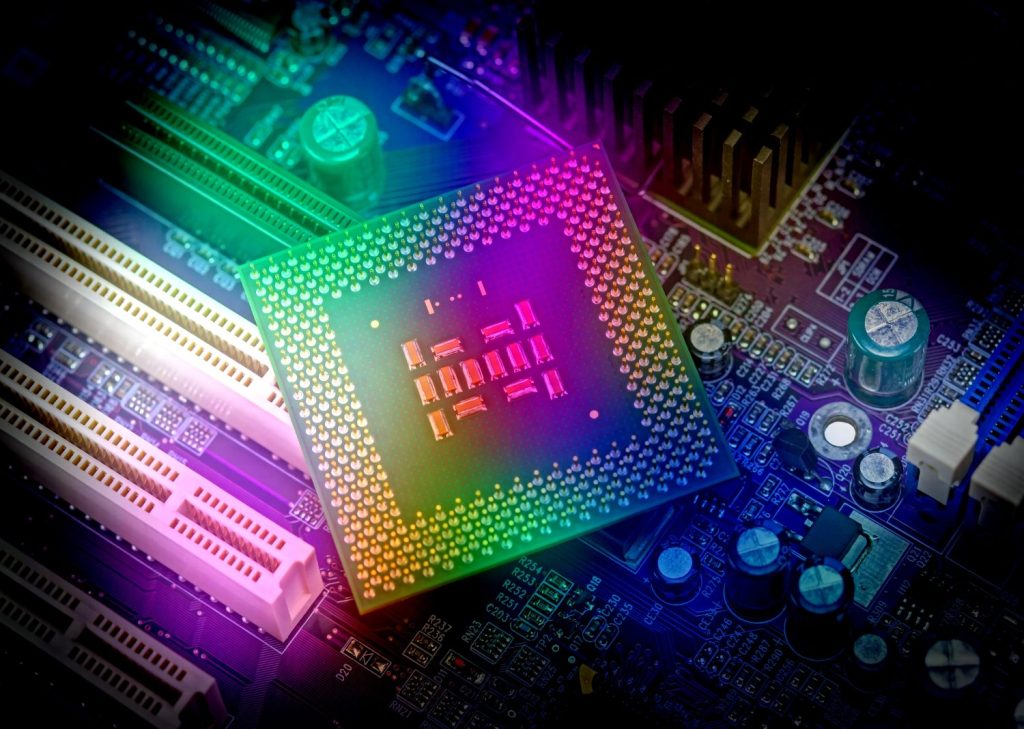
By Mark Waghorn
Good news for cyborgs and their brains. Microchips that merge the brain with machines to treat paralyzed patients are safe, according to new research.
The tiny devices are implanted after a stroke or spinal cord injury to stimulate activity in the nervous system.
A clinical trial reported low rates of adverse events – comparable to similar gadgets to manage neurological diseases.
They can also improve motor neuron disease symptoms. The most sophisticated use sensors surgically placed into the areas of grey matter that control movement.
A Massachusetts team analyzed data from 14 adults paralyzed in all four limbs who were fitted with a system called BrainGate between 2004 and 2021.
The brain-computer interface (BCI) reads the patients’ thoughts – enabling them to make complex reach-and-grasp movements with robotic arms.
Lead author Dr. Daniel Rubin, of Massachusetts General Hospital, said: “This interim report demonstrates that the investigational BrainGate Neural Interface system, which is still in ongoing clinical trials, thus far has a safety profile comparable to that of many approved implanted neurologic devices, such as deep brain stimulators and responsive neurostimulators.
“Given the rapid recent advances in this technology and continued performance gains, these data suggest a favorable risk/benefit ratio in appropriately selected individuals to support ongoing research and development.”

Implanted brain sensors have been used in neuroscientific studies with animals for decades.
They have been approved for short-term use of up to 30 days in humans. But the long-term safety of the technology is unknown.
Participants were fitted with one or two microelectrode arrays in a part of the brain responsible for generating the electrical signals that control limb movement.
Signals associated with the intent to move a limb can then be sent to a nearby computer for decoding in real time.
It allows the user to control an external device simply with mindpower. The average duration was 872 days – yielding a total of 12,203 days for analyses.
There were 68 device-related side effects, six of which were serious. The most common was skin irritation around the portion that connects the implanted sensor to the external computer system
Importantly, none required removal. There were no infections of the brain or nervous system or cases of permanently increased disability.
The BrainGate consortium has published more than 60 articles detailing the ever-advancing ability to harness neural signals for the intuitive control of devices for communication and mobility.
Director Professor Leigh Hochberg, from Harvard Medical School, said: “Safety is the sine qua non of any potentially useful medical technology.
“The extraordinary people who enroll in our ongoing BrainGate clinical trials, and in early trials of any neurotechnology, deserve tremendous credit. They are enrolling not to gain personal benefit, but because they want to help.”
There are an estimated 50,000 people in the UK living with a spinal cord injury. Each year approximately 2,500 people are newly injured.
Prof Merit Cudkowicz, also from Harvard Medical School, said: “Clinical trials of innovative neurotechnologies and BCIs are incredibly exciting, especially with respect to diseases like motor neuron disease or spinal cord injury, where there is still no cure.
“Alongside platform trials of novel medications, our Center for Neurotechnology and Neuro recovery continues to lead in directing, performing, and growing the clinical trials that are providing promising new methods to improve the quality of life for people with neurologic disease.”
Neuroscientists speaking to Insider in 2019 said that while the claim might grab the attention of readers, they did not find it surprising or even particularly impressive according to Business Insider.
“The monkey is not surfing the internet. The monkey is probably moving a cursor to move a little ball to try to match a target,”said Professor Andrew Hires, an assistant professor of neurobiology at the University of California, said.
The study is published in the journal Neurology.
Produced in association with SWNS Talker.
Recommended from our partners
The post Microchips That Merge Brain With Machines Appear Safe: Study appeared first on Zenger News.
